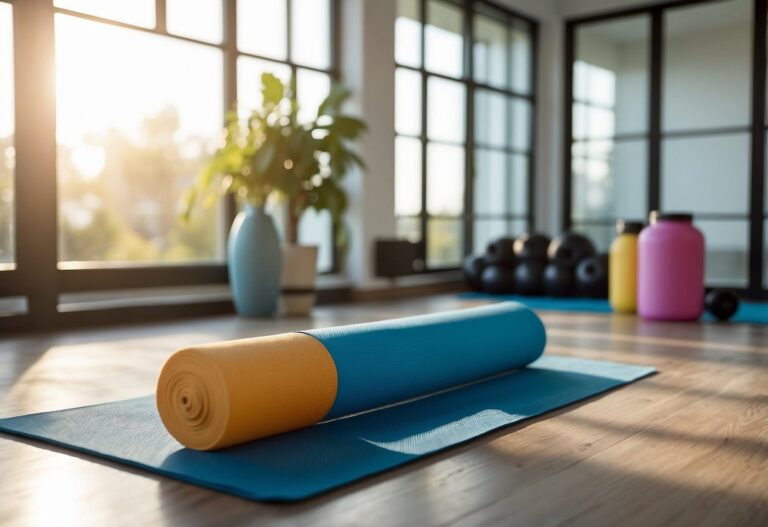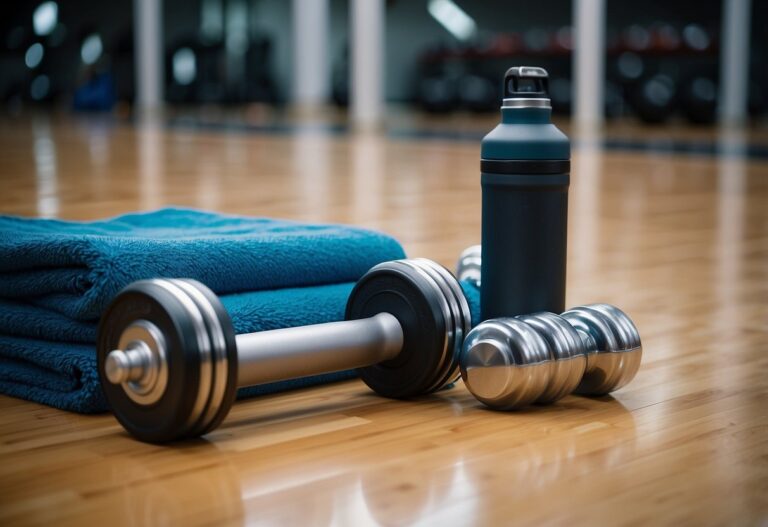If you’re looking to boost your cardio routine, you’ve come to the right place. Cardio workouts are an essential part of staying fit and healthy. They can be fun and effective if you know the right tips and techniques. Ever wonder how to get the most out of your cardio sessions for better results?

It’s important to find the right balance in your workouts to stay motivated and avoid injuries. When done correctly, cardio exercises can improve your endurance, keep your heart healthy, and even enhance your mood. Stay tuned to discover easy and accessible ways to make your cardio workouts more enjoyable and productive.
Prioritise HIIT Sessions
Incorporating High-Intensity Interval Training (HIIT) into your routine can greatly enhance your cardio workouts. Focus on short, intense bursts of exercise followed by brief recovery periods. This approach not only boosts your heart rate but also increases calorie burn.
Imagine doing exercises like bodyweight squats or push-ups. For example, you could do 30 seconds of squats followed by a 30-second rest. HIIT sessions can be as short as 20 minutes yet still very effective.
HIIT also helps improve muscle endurance. Performing a Tabata workout involves 20 seconds of intense effort followed by 10 seconds of rest. Repeating this for just 10 minutes can leave you feeling you’ve had a comprehensive workout.
Incorporate Interval Training
Adding interval training to your cardio workouts can boost both speed and endurance. Start with a warm-up. For instance, you can warm up for about 5 minutes at an easy pace.
During the workout, alternate between intense bursts and recovery periods. Sprint for 30 seconds, then jog or walk for 1 minute for recovery. Repeat this cycle a few times.
For more structured workouts, try running at 85-95% of your max speed for one minute, then jogging for two minutes. Repeat this pattern four to six times. This approach can improve your strength and cardio fitness.
To learn more, check out these interval training workouts designed for effective results.
Track Your Heart Rate
Tracking your heart rate can significantly boost the effectiveness of your workouts. Start by knowing your maximum heart rate, which you can estimate by subtracting your age from 220. For example, if you’re 30 years old, your maximum heart rate is about 190 beats per minute (bpm).
Using a heart rate monitor or a fitness tracker makes it easy to keep tabs on your heart rate. Aim to exercise in different heart rate zones depending on your fitness goals. For fat burning, aim for 50-70% of your maximum heart rate. To boost your endurance, target 70-85%.
Paying attention to your heart rate during workouts can help you fine-tune your effort, preventing over-exertion and ensuring you’re working out efficiently.
Ensure a Proper Warm-up
Warming up before a cardio workout is essential. It helps prepare your muscles and joints, reducing the risk of injury.
Start with a march on the spot for about three minutes. This simple movement gets your blood flowing and raises your heart rate. You can find more details on this at the NHS’s guide on how to warm up before exercising.
Another effective warm-up exercise is the high plank walkout. Begin by bending at your waist and placing your hands on the floor. Walk your hands forward to come into a high plank position. This movement targets your core, quads, and glutes. For more, check out this warm-up routine.
Simple dynamic stretches like arm circles and leg swings are also beneficial. These exercises increase the range of motion in your joints, making your workout smoother and more efficient.
Remember, the key to a good warm-up is consistency and attention to your body’s signals. If you feel any discomfort, modify the movements to suit your level.
Incorporating these warm-ups can make a significant difference in how effective and enjoyable your cardio workouts are.
Mix in low-intensity days

You don’t always need to go all out with your workouts. Mixing in low-intensity days can help your body recover better.
Try going for a brisk walk. Walking can boost your heart and lung strength and lift your mood.
Another good option is a light cycling session. This keeps your heart rate moderate but still gets you moving.
These low-intensity days can also help prevent injuries by giving your muscles a break. It’s a good idea to aim for about 50-65% of your maximum heart rate.
Remember, consistency is key. Even low-intensity cardio can bring great benefits to your overall fitness.
Focus on Proper Form

When doing cardio, proper form is key. If you neglect it, you could risk injury. For example, bad form during running may cause joint pain.
Use a straight posture while running or walking. Imagine a string pulling you up from your head. This helps keep your spine aligned and reduces strain.
Keep your shoulders relaxed and down, not hunched. Relaxed shoulders prevent neck and upper back tension.
Finally, land softly on your feet when running. Avoid heavy footfalls to lessen impact on your knees and ankles. This helps keep your joints healthy and strong.
Stay Hydrated
Staying hydrated is crucial during a cardio workout. It helps you maintain energy levels and perform at your best.
Before you start, drink 16 to 24 ounces of water two hours before your workout. This ensures you’re well-hydrated from the beginning.
During your exercise, aim to drink 8 ounces every 15 minutes. Using a hydration pack or water bottle makes this easier.
After your workout, replace lost fluids by drinking 16 to 32 ounces of water. This helps your body recover faster.
Key tip: Pay attention to your body’s signals. Feeling thirsty means you’re already on the way to dehydration. Stay ahead of it by sipping water regularly.
Incorporate Strength Training

Adding strength training to your cardio workout can increase your overall fitness. You might wonder how to mix both effectively. One simple way is to try circuit training.
In circuit training, you alternate between strength and cardio exercises. For example, do push-ups for 45 seconds, then follow up with 30 seconds of jumping jacks.
Another method is to incorporate super sets. This involves doing a strength exercise and then a cardio exercise without a break. Think squats followed by burpees.
Both methods keep your heart rate up and build muscle simultaneously. It’s efficient and can make your workout more exciting.
Use Wearables for Tracking
Wearables, like smartwatches and fitness trackers, can help you keep track of your cardio workouts. They offer features such as heart rate monitoring, step counting, and even GPS tracking for those long runs.
By setting goals on your wearable, you can tailor your workouts to meet specific fitness targets. For instance, the Samsung Galaxy Watch uses a built-in heart rate sensor to monitor your progress.
Making a habit of wearing your device daily ensures you don’t miss any data. Consider placing your charger in a visible spot so you remember to charge it regularly.
Switch up your routine
Sometimes, doing the same cardio routine can get a bit boring. Switching things up can keep you motivated and help avoid overuse injuries. Have you tried High-Intensity Interval Training (HIIT)? It’s a great way to challenge yourself. Quick bursts of intense activity followed by short rest periods really get your heart pumping.
Another option is varying your cardio activities. Instead of just running, you might want to try cycling, swimming, or even a dance class. This keeps your workouts exciting and works different muscle groups.
How about setting new goals? Changing your goals can give you something fresh to work towards. Whether it’s a new distance, a faster time, or mastering a new activity, setting targets can be invigorating.
Mixing up your routine is key. You might find yourself looking forward to your workouts more and feeling less burnt out. Why not give it a go and see how it works for you?
Benefits of Cardio Workouts
Cardio workouts offer numerous advantages that can enhance different aspects of your health. These benefits include strengthening your heart, helping to manage weight, and improving mental well-being.
Improving Heart Health
Cardio exercises like running, cycling, and swimming are excellent for your heart. They make your heart pump more efficiently, which can reduce the risk of heart disease. The American Heart Association recommends aerobic exercises for heart health. Activities that raise your heart rate, like brisk walking or jogging, strengthen your heart muscles.
Regular cardio also helps lower blood pressure, which can protect your arteries from damage. Including cardio in your routine can improve blood circulation, ensuring that your organs receive more oxygen and nutrients. This makes your body more efficient overall and decreases the chance of heart-related problems.
Weight Management
Cardio workouts are effective for weight management. By increasing your heart rate, these exercises help burn calories. Whether you prefer high-intensity interval training (HIIT) or steady-state exercises like walking or cycling, they can aid in weight loss. Verywell Fit notes that regular cardio can also prevent weight gain by maintaining a healthy metabolism.
Incorporating cardio into your routine can make weight loss more manageable and sustainable. It’s important to find an enjoyable activity, whether it’s dancing, hiking, or using gym equipment, to keep you motivated. Cardio combined with a balanced diet can be a powerful tool for achieving and maintaining a healthy weight.
Boosting Mental Health
Cardio workouts do more than just improve physical health; they also benefit your mental well-being. Engaging in regular aerobic exercises can reduce symptoms of depression and anxiety. Activities such as running and cycling increase the production of endorphins, often referred to as the body’s “feel-good” chemicals. This can lead to improved mood and a sense of happiness.
Additionally, cardio exercises can enhance cognitive functions, such as memory and concentration. According to Healthline, regular physical activity can improve sleep quality, making you feel more rested and alert during the day. Making time for a cardio workout can be a practical way to relieve stress and boost your overall mental health.
Effective Cardio Workouts
Cardio workouts are great for improving your heart health and burning calories. Two of the most effective forms of cardio are running and jogging, and cycling. Each offers unique benefits and can be tailored to fit your fitness level.
Running and Jogging
Running and jogging are some of the simplest and most effective cardio exercises. You don’t need much equipment—just a good pair of running shoes. Running helps burn a lot of calories and improves your lung capacity. Jogging is a bit gentler on your joints but still provides a solid cardiovascular workout.
You can start by jogging at a comfortable pace, gradually increasing your speed and distance as your stamina improves. Including interval training, where you alternate between periods of high and low intensity, can make your sessions more effective. Running on varied terrains like hills can also boost your endurance and strength. Remember to warm up before starting and cool down after finishing to avoid injuries.
Cycling
Cycling is another excellent cardio option that’s easier on your joints compared to running. Whether you prefer outdoor biking or using a stationary bike, cycling can significantly improve your cardiovascular health. It’s also great for toning your legs and core muscles.
Start with a moderate pace and gradually increase your intensity. Interval training works wonders here too. You can mix in bursts of high-intensity sprints with periods of easy pedalling. If you have access to different terrains, try cycling up hills to increase the challenge. Always ensure your bike is properly adjusted to avoid strain and maximise comfort.
Incorporating these workouts into your routine can help you maintain good cardiovascular health, manage weight, and boost overall fitness. Remember to enjoy the process and listen to your body.
Tips for Maximising Cardio Benefits
Maximising the benefits of your cardio workouts involves maintaining consistency, incorporating a variety of activities, and keeping an eye on your heart rate. These strategies help keep your routine effective and engaging.
Consistency is Key
To see real improvements in your cardiovascular endurance, staying consistent with your workouts is essential. Aim to engage in cardio activities most days of the week. Even short sessions can be very effective if done regularly. For example, a brisk 30-minute walk five times a week can yield significant health benefits.
Developing a routine that you can stick with is crucial. Find a time that fits your schedule and make it a habit. Keeping a workout journal or using a fitness app can help track your progress and keep you motivated. Remember, consistency is about making exercise a part of your daily life, not just a part-time hobby.
Mixing Different Cardio Activities
Variety is crucial when it comes to cardio. Mixing different activities like running, cycling, and swimming can keep your workouts interesting and challenge your body in new ways. When you vary your routine, you engage different muscle groups and reduce the risk of injury from repetitive strain.
Incorporating cross-training can also make your workouts more enjoyable. For instance, you might try cycling one day and swimming the next. This variety helps prevent boredom and can lead to better overall fitness by working different parts of your body. Additionally, it’s a great way to keep things fresh and exciting.
Monitoring Your Heart Rate
Understanding and monitoring your heart rate is essential for effective cardio training. Your heart rate can indicate how hard your body is working and whether you’re training within the optimal range for your fitness goals. Using a heart rate monitor or fitness tracker can help you stay in your target heart rate zone.
The target zone is typically 50-85% of your maximum heart rate, depending on your fitness level and goals. By monitoring your heart rate, you can adjust the intensity of your workout to ensure you’re getting the most benefit. For those looking to improve endurance, staying within this zone during workouts is key.







